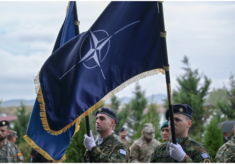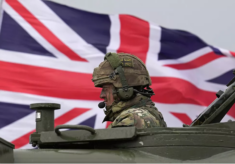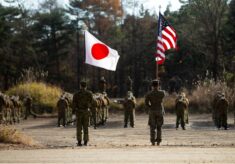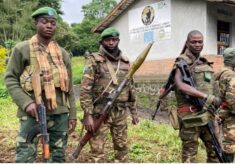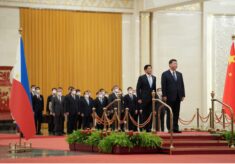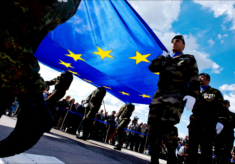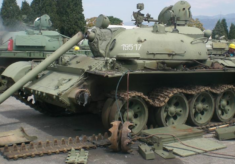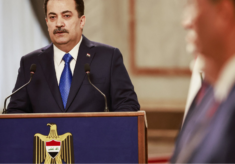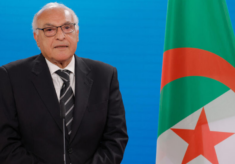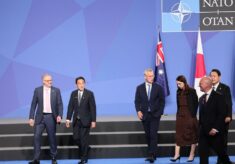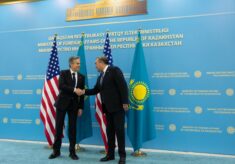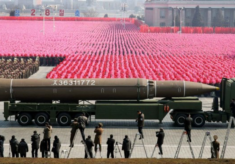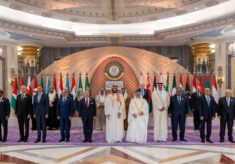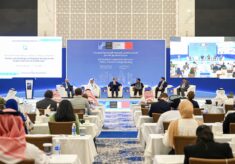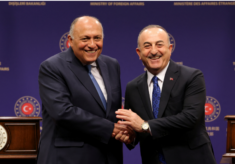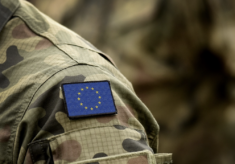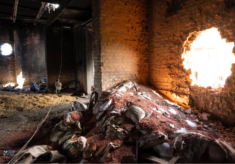One of the core reasons that have made NATO the most successful security alliance in recent history is its ability to adapt to a changed political environment. This also includes adapting the strategic foundations of the Atlantic Alliance and its core strategic documents to the respective political environment.
Since 2014, the security situation in Europe has changed substantially. The European peace order that was established together with Russia after the end of the East-West conflict has ceased to exist – it has fallen prey to Russia’s aggression in Eastern Europe, which culminated in the Russian annexation of Crimea. Hopes to establish cooperative security in the Middle East have been totally destroyed by civil wars and Islamist terror. NATO’s reaction to those changes was a surprisingly united and quick response together with the European Union. The September 2014 NATO Summit in Wales adopted a host of initial measures to improve the defence capability of the Alliance. Just under two years later, in July 2016 at the Warsaw Summit, these measures were enhanced and adapted to the threats in the East and the South.
Will those immediate measures suffice to enhance the Alliance’s military capacity or is there a need for a fundamental strategic debate about its future tasks and missions? Does NATO need a new Strategic Concept and if so, how should it be formulated and what elements should it contain?
The need for a change in strategy
The most recent strategy, adopted at the NATO Summit in Lisbon in November 2010, was naturally marked by the events that had occurred before and during the drafting process. Russia was still considered a partner of NATO and the War in Afghanistan, in which 28 NATO members and 22 partner states participated in various ways, had been going on for years and yet there were no signs of a breakthrough in the pacification of the Hindu Kush country. Furthermore, the admission of Albania and Croatia to NATO in 2009 was supposed to increase stability in the Balkans – a region NATO had long been engaged in.
In this situation, NATO saw itself less as a defence organisation than as a crisis manager beyond the Alliance’s borders, an honest broker both with regard to Russia and to global security cooperation as well as a political transformation agent for aspiring member states in South-East Europe. While collective defence in accordance with Article 5 of the Washington Treaty nominally remained the Alliance’s raison d’être, it was not regarded as a realistic scenario ever to be implemented.
The condition could not be more different today. Russia’s readiness to alter European borders by force as demonstrated in Crimea marks a turning point in security policy. What is more, since Russia’s aggression against Ukraine, the regime in Moscow has even increased hostilities. Therefore, the crisis in Eastern Europe is not only a passing patch of bad weather but, in fact, represents a fundamental climate change in terms of security policy. Since 2014, NATO has returned to the Article-5-world, in which deterrence and collective defence have again become its primary tasks. At the same time – and this constitutes an important element in the dual strategy adopted towards Russia – options are maintained to keep up the dialogue and cooperation with Moscow.
Secondly, the upheavals in the Middle East and Northern Africa exceed everything we have seen so far in those already unstable regions. The massive conflicts in the Islamic world are reminiscent of the Thirty Years’ War four centuries ago, a conflict that was motivated by religious and cultural reasons as well as by sheer power politics and which did not end with the victory of one party to the conflict, but owing to general exhaustion. Every day, NATO members experience the direct consequences of the developments in MENA in the form of civil wars, Islamic terrorism and major refugee movements towards the North.
At the same time, there is an increasing recognition of the fact that interventions in MENA from the outside are rarely successful. In a region where statehood is being effectively eroded and replaced by actors with ethnic or religious motives who are ready to use violence, traditional instruments of crisis management from the outside are doomed to fail.
Thirdly, developments in the Asia-Pacific region can become vital threats to members of the Alliance, a fact that has so far been mostly ignored. The economic and military growth of China and the emerging open conflicts over territories and sea areas could jeopardise trade routes to Europe and America and thus the economic survival of the affected states. Furthermore, in the Asia-Pacific region, five nuclear powers are facing each other directly, in some cases with hostile intent (China, India, Pakistan, Russia and North Korea). The United States – as the sixths nuclear power – is also exerting its influence in the region as a stabilising or disturbing factor, depending on the perspective. The potential for violent conflicts is obvious. Even Article 5 scenarios are imaginable. Given the unpredictability of the regime in Pyongyang, a missile launch towards Alaska does not seem entirely unrealistic.
In the light of such drastic changes it is essential to carry out a strategic reorientation of NATO or, more precisely, adapt the strategic foundations of the Atlantic Alliance to the new situation. NATO must achieve consensus on which of its future tasks and missions in the Article-5 world.
Reaching such consensus, however, is not an easy task given that the soon to be 29 NATO members (after the admission of Montenegro) have different interests depending on their geographic situation and history. What is required is a policy debate on the future tasks of the Alliance that leads to a generally accepted new Strategic Concept.
Formulating a strategy
After having formulated seven strategies under very different conditions, NATO has plenty of experience when it comes to conducting and implementing fundamental strategic debates. As a rule, new strategies were based on the predecessor document, adopting those parts that remained valid in the new era as “agreed language”. Consequently, the most recent document, the 2010 Strategic Concept, would be the foundation on which a strategic debate should be based.
That Concept had been the result of a new approach in NATO: unlike previous strategies it was supposed to be a short and concise document, which connected elements of strategy with those of political self-determination, often referred to as a “mission statement”. To come to such a new type of Strategic Concept, NATO did not develop it in Alliance committees behind closed doors. Instead, it was written in a transparent process: an expert group led by Madeleine Albright, the former United States Secretary of State, was tasked with the development of recommendations that would be gained from specially organised seminars and debates in the member states. The Secretary General would remain in charge, build a strategy from those recommendations and submit it to the member states for approval.
The result was a lean and precise Strategic Concept that found much more resonance than NATO documents normally do since it made clear statements on the tasks and objectives of the Alliance. The Concept’s description of the three core tasks of NATO – defence in accordance with Article 5, crisis management outside the Alliance and cooperative security through partnerships – may not have been very revolutionary. What matters, however, is that all member states were able to agree on this canon (which can by all means be considered a hierarchy) in spite of the alleged existential crisis of the Alliance and its lack of future orientation.
Which of the lessons learned in 2009/2010 can be used in the new strategy debate that has been demanded, and how should the future Strategic Concept be formulated?
Principles of the strategy debate
In response to the resurgence of direct threats to the territorial integrity of Alliance territory, there are voices in the United States calling for a return to the strategies employed during the East-West conflict, i.e. concepts that are primarily military in nature and are subject to secrecy. Now that NATO’s purpose has again become evident, they claim, there is no longer any necessity for “self-affirming folklore”. Rather, there is a need for clear military planning requirements and for adapting the means to the ends, as described above.
Such an argument fails to recognise that unlike during the Cold War, there is now very much an obligation to publicly justify security policy. In times of heightened public interest in foreign and security policy threats in particular, there is an increased need to explain contexts and to canvas support for political decisions. This is compounded by the fact that modern communication tools such as social media open the floodgates for disinformation and conspiracy theories. The most poignant example of this is Russia’s current propaganda offensive against NATO. The development of a new Strategic Concept should thus be guided by three principles.
Firstly, the process should again be transparent and inclusive in nature and involve the discussion of individual aspects in workshops or conferences. Secondly, two non-NATO countries must be included on an equal basis: Sweden and Finland. These two countries, whose civilian and military commitment to the Alliance exceeds that of some full members, are already very closely involved in NATO processes. Despite the fact that they will have no voting rights in the North Atlantic Council when it later decides on the new strategy, their contribution to strategy development is indispensable.
Thirdly, the situation in the Asia-Pacific region necessitates consultation with important partners in the region: Australia, Japan, South Korea and possibly New Zealand. They have already demonstrated their commitment in Afghanistan and, as “Western democracies”, are indispensable for maintaining the rules-based international order. In addition, Japan and South Korea in particular should be included in NATO’s nuclear debate since they are also sheltered by the United States’ “nuclear umbrella” (under the circumstances of “extended deterrence”).
The core functions of the Alliance
Up until the late 1960s, the Alliance in fact concentrated on the core task of deterrence/defence against aggression on the part of the Soviet Union or the Warsaw Pact countries (although neither is explicitly named as a specific threat in the Treaty). The publication of the Harmel Report in 1967 written by Belgium’s Foreign Minister Harmel resulted in the addition of a second task, namely “détente”. Such a dual approach is also found in the current political and military measures vis-à-vis Russia as agreed at the NATO Summits in Wales and Warsaw. These remained the two main tasks until the fall of the Berlin Wall in 1989.
The first Strategic Concept after the end of the Cold War, published in 1991, defined four core functions: preserve stability in Europe, provide a forum for Allied consultation as provided for in Article 4 of the Washington Treaty, deter and defend against attack and preserve the strategic balance.
The 1999 Strategic Concept no longer made reference to core functions, but provided a somewhat complicated description of the four NATO “security tasks”: security through peaceful conflict resolution, transatlantic consultation, deterrence/defence and stability through crisis management and partnership. The subsequent 2010 Strategic Concept outlined the three aforementioned core functions of collective defence, crisis management and cooperative security.
It is evident that given the long-running conflict with Russia and the multifaceted threats facing the Alliance territory, a combination of tasks from before and after the Cold War must be found. Hence, the first core task in a new Strategic Concept should be deterrence and defence or the protection of Alliance territory. Unlike the time after 1991, however, this is no longer merely obligatory rhetoric, but must be backed up by credible military capabilities.
In line with the well-known dual strategy, the second core task in addition to deterrence would be to strive towards détente in relations with Russia, as described in the Harmel Report published almost fifty years ago. However, two factors are of critical importance. Firstly, as intended by Pierre Harmel, a policy of détente should be approached from the Alliance’s own position of strength. Secondly, expectations with regard to détente should be kept low. Currently, there is no sign of any fundamental change in Russian policy towards respecting principles of international law such as the inviolability of borders.
A third task consists of creating or at least fostering a stable security environment in the countries neighbouring NATO territory either through close partnerships or, in exceptional cases, through military intervention. In the 2010 Strategic Concept, these were still presented as two separate core functions, which caused debate even as early as during the Strategic Concept’s development phase. It is worth noting, though, that NATO’s crisis management efforts – be it in Afghanistan or Libya – were of limited success. Given the widespread “intervention fatigue” in all member states, military crisis management becomes significantly less likely in future.
Partnerships, on the other hand, be they to obtain support from non-NATO countries (as in Afghanistan) or to provide other countries with NATO military expertise to enable them to enhance their own preventive security capabilities, have at least in part been successful. If both functions – partnership and military crisis management – are combined under the concept of “stability export”, it will be possible to provide a flexible response to any requirements.
However, the crucial point is that the current NATO partnership concept was developed in the years preceding 2014 and based on structures and formats that are no longer appropriate to the requirements of the world of Article 5. The oldest existing partnership format, the “Partnership for Peace”, essentially no longer exists because of the conflict between two members of this format, Russia and Ukraine. Due to the developments in the Islamic world, two other formats, the Mediterranean Dialogue (MD) and the Istanbul Cooperation Initiative (ICI) between NATO and the Gulf States, are also in ruins. A fundamentally new approach is required.
The fourth task is fundamentally new and is derived from current, especially hybrid challenges, be they in the form of Islamic terror, cyber warfare or indeed Russia’s propaganda offensives. Since there is only very limited opportunity to stabilise the Middle East and since Islamic terrorists do not only pose an external threat to NATO countries but are already established within Western societies, religiously or ideologically motivated terrorism cannot be fully prevented. Despite all preventive efforts, terror attacks of varying types and scale will occur – a sad reality which several NATO countries have had to face in the past. Such attacks are aimed at destabilising social cohesion and always bear the risk of causing panic and over-reaction. The disinformation and propaganda disseminated by Russia has a similar objective, namely the destabilisation of what it regards as “Western” societies. In both cases, the resilience of these societies, i.e. their ability to endure attacks and not be easily taken in by disinformation, must be enhanced. There are many ways how NATO could take on this task. In line with the principle of the “Centres of Excellence”, which NATO maintains in many member states and which cover a variety of areas, expertise on resilience could be gathered and, if required, provided to NATO Allies.
Given its fundamental importance, the new NATO strategy must be commissioned by the NATO’s highest political body, the North Atlantic Council, at Heads of State and Government level. The next opportunity would be the NATO summit scheduled to take place in Brussels in 2017. Should the Alliance be tasked to enter into the process, new Strategic Concept could be issued in 2018 or 2019 at the latest – in line with NATO’s 70th anniversary. This would be a forceful sign of NATO vitality even under challenging conditions.
Karl-Heinz Kamp – President of the Federal Academy for Security Policy in Berlin. This article reflects his personal opinions

